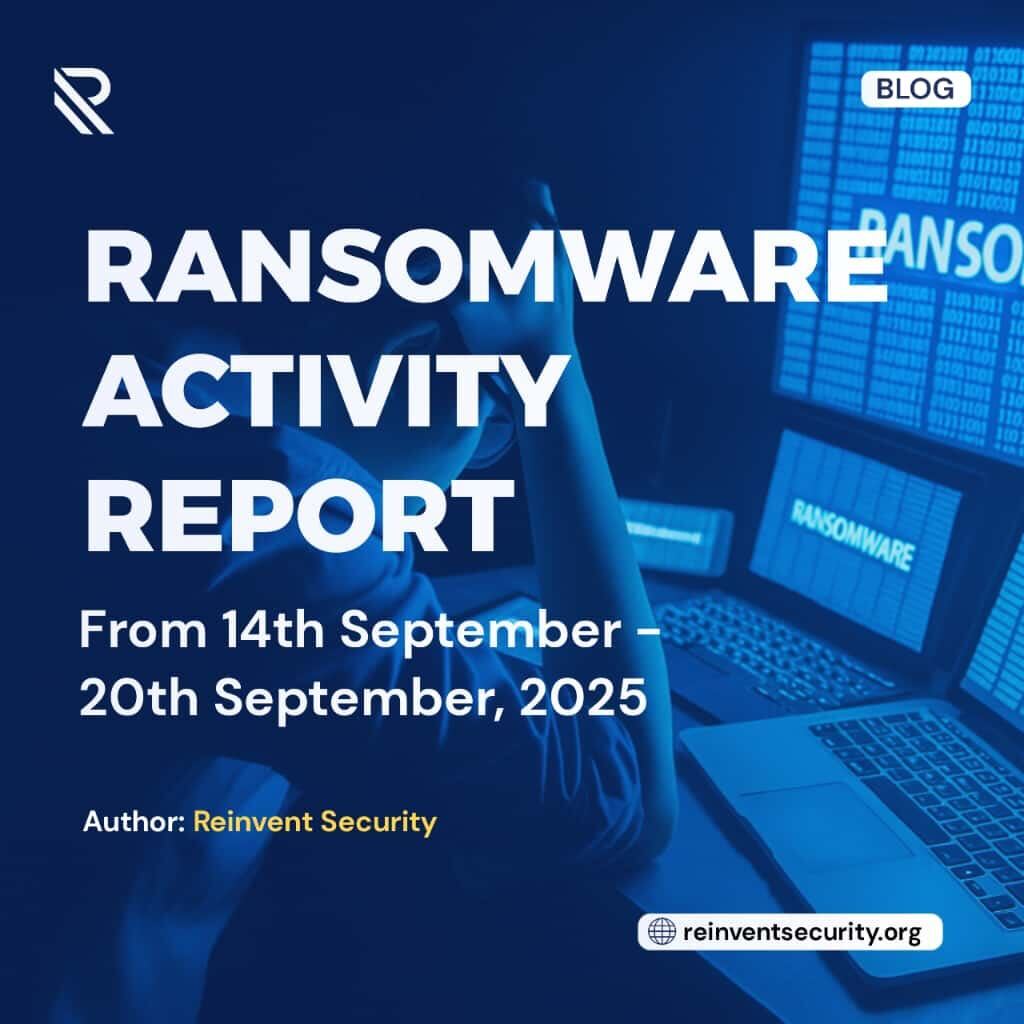Blog
Ransomware Activity Report from 14th September - 20th September 2025
Reinvent Security
Posted: September 22, 2025 • 4 min Read

Ransomware Activity Report from 14th September - 20th September 2025
Between September 14 and 20, 2025, our threat intelligence monitoring recorded a significant increase in ransomware activity, with 179 confirmed victims. This is a significant increase from the previous week and demonstrates the continuing threat from ransomware groups. Qilin ransomware group went back to the top spot with 32 victims. The Business Services industry was the most affected while the United States remained the top-targeted country.
RANSOMWARE THREAT LANDSCAPE OVERVIEW
There was a notable surge in ransomware activity during the reporting period with 179 victims posted on various leak sites. The Qilin group resumed the top position with 32 victims taking over from the previous week's leader, thegentlemen. Incransom and Play also persisted with 27 and 15 victims respectively, further highlighting their positions as major players in the RaaS ecosystem.
The Business Services industry regained its spot as the most targeted, with 36 victims, which reflects the continued appeal of sensitive business and client information for ransomware groups. The Financial Services and Technology sectors also experienced high levels of activity with 26 and 24 victims, respectively, highlighting their continued attractiveness to ransomware groups due to their interconnectedness and valuable data assets.
Geographically, the United States remained the epicenter of ransomware activity, witnessing a disproportionately high volume of attacks with 92 victims. This consistent trend confirms the country's status as a prime and profitable target for cybercriminals. Following the U.S., countries like South Korea (12 victims) and Italy (8 victims) were also heavily impacted, demonstrating a global reach for these sophisticated attacks.
OBSERVATIONS
- Qilin ransomware group made a rapid return to the top spot.
- The Business Services Industry returned as the most-targeted. This is attributed to the fact that Business Services firms are likely to have a treasure trove of information on their customers, including confidential financial information, intellectual property, and personally identifiable information (PII)
- The United States continues to be the top-targeted country choice among ransomware gangs. The reasons for this trend include the country's high concentration of wealthy corporations, its interconnected digital infrastructure, and the perceived willingness of U.S. organizations to pay ransoms.
RECOMMENDATIONS
- Organizations should develop a well-defined incident response plan. This plan should include not only technical recovery steps but also communication and public relations strategies to manage the reputational fallout.
- Organization should develop a recovery plan to maintain and retain multiple copies of sensitive or proprietary data and servers in a physically separate, segmented, and secure location.
- Organizations should implement a strong foundational security posture now more than ever. This involves implementation of Multi-Factor Authentication (MFA), exhaustive patch management, vulnerability scans, and robust identity and access control.
- Organizations should leverage real-time threat intelligence on the ransomware groups' TTPs (Tactics, Techniques, Procedures), to ensure early detection.
- Organizations in the targeted industries must undertake a detailed security control audit with a focus on protecting core operating technology and intellectual property.
- Organizations in the United States should consider additional protective measures, such as enhanced monitoring of network traffic and a comprehensive incident response plan, to mitigate the higher risk of attack.
- Organizations should constantly assess the security posture of suppliers and partners because supply chain compromises are becoming a common way for threat actors to gain access.
- Organizations should practice timely sharing of attack data among industry peers to improve situational awareness and defense coordination.